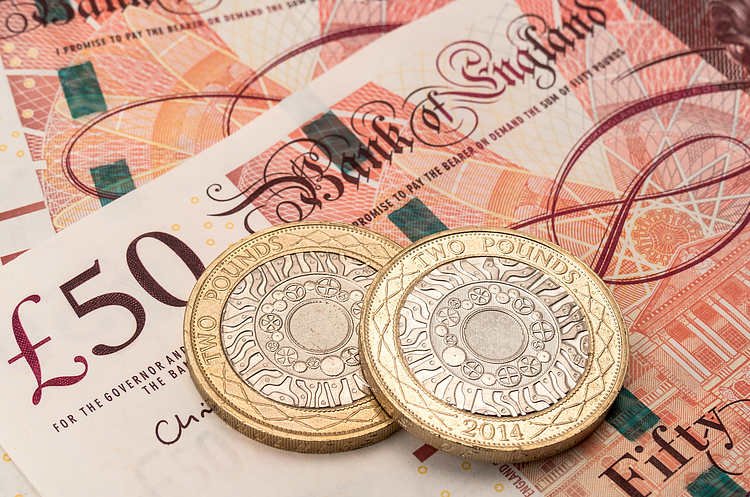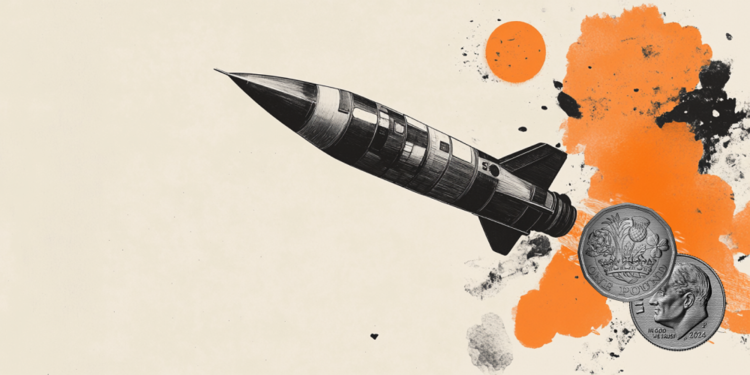The Pound Sterling (GBP) faces intense selling pressure against its major peers on Wednesday after the release of the United Kingdom (UK) Consumer Price Index (CPI) data for September.
The Office for National Statistics (ONS) reported that the core CPI – which excludes volatile components of food, energy, alcohol and tobacco – grew by a less-than-expected 3.5% on an annual basis. Economists forecasted underlying price pressures to have risen by 3.7% against the prior reading of 3.6%.
Headline inflation rose steadily by 3.8% on year, slower than estimates of 4.0%. On a monthly basis, prices remained flat after growing by 0.3% in August.
Inflation in the services sector, which is closely tracked by the Bank of England (BoE), remained steady at 4.7%.
Signs of easing price pressures would bolster market expectations of more interest rate cuts by the BoE in the remainder of the year. Last week, BoE dovish expectations increased after the release of the employment data for the three months ending August, which showed a higher jobless rate and a slowdown in wage growth.
Pound Sterling Price Today
The table below shows the percentage change of British Pound (GBP) against listed major currencies today. British Pound was the weakest against the Australian Dollar.
| USD | EUR | GBP | JPY | CAD | AUD | NZD | CHF | |
|---|---|---|---|---|---|---|---|---|
| USD | 0.02% | 0.37% | -0.14% | -0.13% | -0.13% | -0.14% | -0.01% | |
| EUR | -0.02% | 0.34% | -0.16% | -0.15% | -0.15% | -0.14% | -0.03% | |
| GBP | -0.37% | -0.34% | -0.49% | -0.49% | -0.49% | -0.48% | -0.36% | |
| JPY | 0.14% | 0.16% | 0.49% | -0.01% | 0.00% | 0.00% | 0.14% | |
| CAD | 0.13% | 0.15% | 0.49% | 0.00% | -0.01% | 0.02% | 0.12% | |
| AUD | 0.13% | 0.15% | 0.49% | -0.00% | 0.00% | 0.00% | 0.12% | |
| NZD | 0.14% | 0.14% | 0.48% | -0.01% | -0.02% | -0.01% | 0.11% | |
| CHF | 0.01% | 0.03% | 0.36% | -0.14% | -0.12% | -0.12% | -0.11% |
The heat map shows percentage changes of major currencies against each other. The base currency is picked from the left column, while the quote currency is picked from the top row. For example, if you pick the British Pound from the left column and move along the horizontal line to the US Dollar, the percentage change displayed in the box will represent GBP (base)/USD (quote).
Daily digest market movers: Pound Sterling posts fresh weekly low against US Dollar
- The Pound Sterling declines to weekly low near 1.3310 against the US Dollar during Wednesday’s European session. The GBP/USD pair extends its losing streak for the fourth trading day. The Cable slumps after the release of the UK inflation data, which showed signs that price pressures have peaked for now.
- Additionally, the strength of the US Dollar is also contributing to weakness in the GBP/USD pair. During the press time, the US Dollar Index (DXY), which tracks the Greenback’s value against six major currencies, trades firmly near Tuesday’s high around 99.00.
- The US Dollar edges up due to optimism that the United States (US) and China will reach a trade deal soon. US President Donald Trump has been expressing confidence that both nations will reach a fair deal. On Tuesday, Trump also maintained a positive tone towards the US-China trade deal, but expressed caution over the likelihood of the meeting with Chinese leader Xi Jinping in South Korea later this month.
- “So now we’re going to have a fair deal, and I think we’re going to have a very successful meeting,” Trump said on Tuesday. However, the US president added later that the meeting “Maybe it won’t happen,” Yahoo news reported.
- Meanwhile, growing hopes that the US federal government could reopen this week have also supported the US Dollar. The US Senate Minority Leader Chuck Schumer said on Tuesday that the Democrat House leader Hakeem Jeffries and him reached out to Trump to sit down and negotiate a possible reopening of the government, Reuters reported.
- On the economic front, investors await the delayed US CPI data for September, which will be published on Friday. The inflation data will significantly influence market expectations for the Federal Reserve’s (Fed) monetary policy outlook.
- Economists expect the US headline CPI to have grown at a faster pace of 3.1% on an annuali basis, up from the prior 2.9% advance, with core figures rising steadily by 3.1%.
Technical Analysis: Pound Sterling sees more downside towards 1.3140

The Pound Sterling falls further to near 1.3310 against the US Dollar on Wednesday. The GBP/USD pair slides after failing to exceed the level marked by the 20-day Exponential Moving Average (EMA), which trades around 1.3407.
The 14-day Relative Strength Index (RSI) falls to near 40.00. A fresh bearish momentum would emerge if the RSI drops below that level.
Looking down, the August 1 low of 1.3140 will act as a key support zone. On the upside, the psychological level of 1.3500 will act as a key barrier.
Inflation FAQs
Inflation measures the rise in the price of a representative basket of goods and services. Headline inflation is usually expressed as a percentage change on a month-on-month (MoM) and year-on-year (YoY) basis. Core inflation excludes more volatile elements such as food and fuel which can fluctuate because of geopolitical and seasonal factors. Core inflation is the figure economists focus on and is the level targeted by central banks, which are mandated to keep inflation at a manageable level, usually around 2%.
The Consumer Price Index (CPI) measures the change in prices of a basket of goods and services over a period of time. It is usually expressed as a percentage change on a month-on-month (MoM) and year-on-year (YoY) basis. Core CPI is the figure targeted by central banks as it excludes volatile food and fuel inputs. When Core CPI rises above 2% it usually results in higher interest rates and vice versa when it falls below 2%. Since higher interest rates are positive for a currency, higher inflation usually results in a stronger currency. The opposite is true when inflation falls.
Although it may seem counter-intuitive, high inflation in a country pushes up the value of its currency and vice versa for lower inflation. This is because the central bank will normally raise interest rates to combat the higher inflation, which attract more global capital inflows from investors looking for a lucrative place to park their money.
Formerly, Gold was the asset investors turned to in times of high inflation because it preserved its value, and whilst investors will often still buy Gold for its safe-haven properties in times of extreme market turmoil, this is not the case most of the time. This is because when inflation is high, central banks will put up interest rates to combat it.
Higher interest rates are negative for Gold because they increase the opportunity-cost of holding Gold vis-a-vis an interest-bearing asset or placing the money in a cash deposit account. On the flipside, lower inflation tends to be positive for Gold as it brings interest rates down, making the bright metal a more viable investment alternative.







